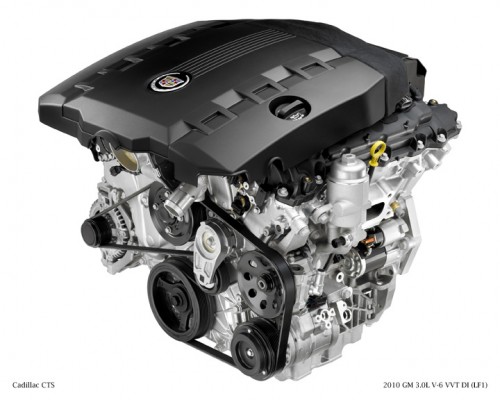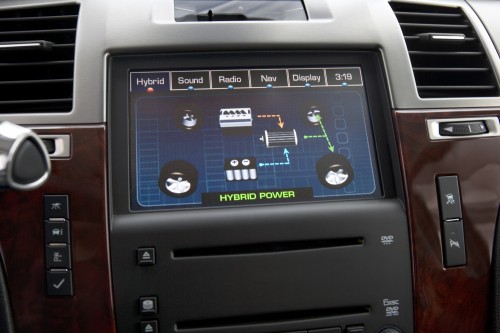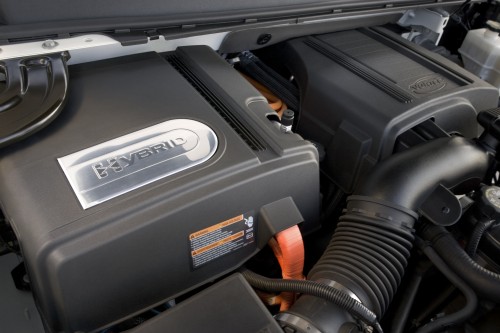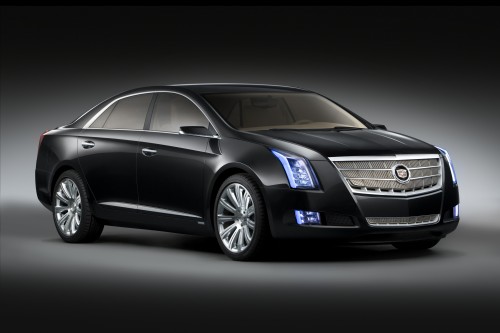BMW has established its brand personae by edging toward the performance end of the luxury versus performance scale. Mercedes traditionally leans toward the luxury end of the same spectrum. Both BMW and Mercedes have released cars which pressed the boundaries of their traditional inclinations of course. Cadillac has also released luxury performance models across the spectrum, from the speed demon super car sedan CTS-V to the sporty but efficient SRX SUV.
The mainstream Cadillac base engine in the CTS Family and 2010 SRX is the new 3.0 L VVT direct injection V6, the LF1. The latest BMW 3.0L is not the normally aspirated 3L used in the BMW 3-series, but rather a related engine called N52B30 used in the X3 and X5 SUV’s making 260hp, and in the 2009 BMW Z4 sDrive30i subcompact convertible making 255 hp.
Let’s compare how the Cadillac engine stacks up with the Sporty BMW power plant. I think everyone agrees that BMW knows how to make engines — the engine, along with the steering quality, get the most comments / compliments from the automotive press in BMW reviews. So the question is, how well does the Cadillac LF1 Engine compare?
BMW 3L:
The 6-cylinder normally aspirated engine: powerful and light thanks to magnesium.
Offering spontaneous power and performance, excellent motoring refinement and outstanding efficiency, the 6-cylinder naturally-aspirated engine … offers the very best in its segment. Weighing just 355 lb thanks to its composite magnesium/aluminum crankcase, cylinder head cover made of a special synthetic material and lightweight camshafts with aluminum VANOS control unit, is exceptionally light.
While BMW’s VALVETRONIC engine management controls valve stroke on the intake valves, double-VANOS varies the angle of the intake and outlet valves in an infinite process. This allows particularly efficient use of fuel, providing a “beefy” torque curve and giving the engine instant response.
The engine in the BMW Z4 sDrive30i develops maximum output of 255 hp from 3.0 liters capacity at an engine speed of 6,600 rpm. Maximum torque of 220 lb-ft, in turn, comes at just 2,600 rpm.
The Cadillac LF1 3.0L: 2010 GM 3.0L V-6 VVT DI (LF1)
The 3.0L V-6 VVT DI LF1 is part of GM’s growing global family of V-6 engines. They were jointly developed for applications around the world, drawing on the best practices and creative expertise of GM technical centers in Australia, Germany, North America, and Sweden.
These engines apply the most advanced automotive engine technology available, from state-of-the-art casting processes to full four-cam phasing to ultra-fast data processing and torque-based engine management. Each delivers a market-leading balance of good specific output, high torque over a broad rpm band, fuel economy, low emissions and first-rate noise, vibration and harshness control, with exclusive durability enhancing features and very low maintenance.
Features of this engine include:
– Direct Injection Technology
– Aluminum engine block and cylinder heads
– Dual overhead cams with four valves per cylinder and silent chain cam drive
– Composite upper intake manifolds
– Integrated exhaust manifolds
– Optimized exhaust manifolds
– Fully isolated composite camshaft covers with added acoustic treatment
Engine Dyno for the Cadillac LF1 V6:
Comparative Stats:
| Engine | HP | RPM | Torque | RPM |
| Cadillac LF1 (CTS) | 270 | 7000 | 223 | 5700 |
| BMW N52S30 (x3) | 260 | 6600 | 225 | 2750 |
Conclusions?
These two engines appear to have very similar performance. The Cadillac puts out a bit more power, but the BMW is tuned for slightly more low-end torque. Another factor to consider is that the BMW apparently requires premium fuel, while the Cadillac makes similar power using regular unleaded fuel.






